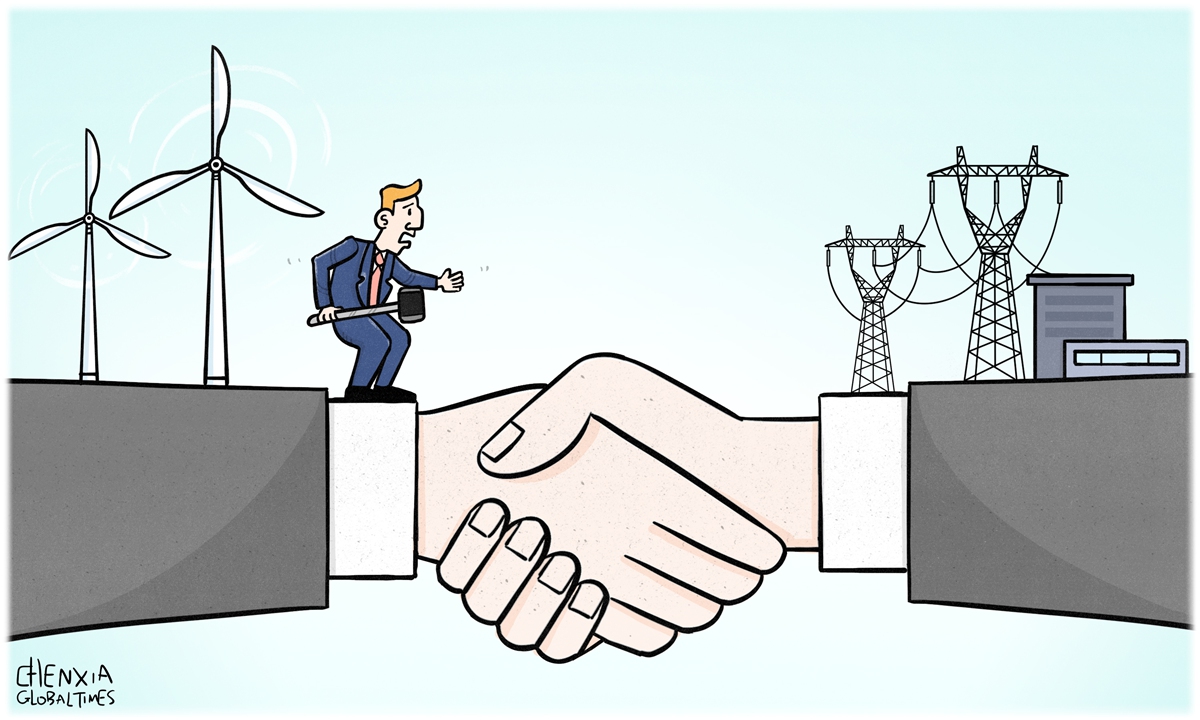
Illustration: Chen Xia/Global Times
The China-Pakistan Economic Corridor (CPEC) projects are always in the crosshairs deliberately targeted by the West and its like-minded international financial institutions especially the IMF.
Reports showed this time fresh victims are Chinese independent power producers (IPPs), which installed power plants under the CPEC framework helping Pakistan ease its energy crisis by adding more than 5,320 megawatts electricity in the Pakistan national grid system.
Indian media outlet News18 reported recently that the IMF has asked cash-strapped Pakistan's government to renegotiate the CPEC energy deals before making payments of around $1.5 billion to the Chinese power plants, putting Islamabad in a tight spot. The IMF suspected that the Chinese IPPs might have been overcharging Pakistan, according to the report.
Whether might be called a blackmailing or taking advantage of Pakistan's situation, it seems IMF economists viewed Chinese IPPs as sharks for allegedly overcharging for electricity generation.
The IMF reported dictation to CPEC IPPs is not a new story. The IMF then chief economist Maurice Obstfeld cautioned Pakistan against increased Chinese involvement in the economy during his address to a news conference at the IMF and World Bank annual meetings in Bali in 2018, according to Reuters. Obstfeld warned that the increasing role could bring both benefits and risks.
I believe IMF knows very well the worth of the CPEC IPPs and its benefit to Pakistan. The global lender is also well-versed with fact that Chinese IPPs came to rescue at a time when Pakistan and its masses had plunged into economic turmoil due to power shortage.
Recently Chinese IPPs' significance and contribution to Pakistan came under the spotlight again. It has been reiterated last week by Pakistan Federal Minister for Planning and Development Ahsan Iqbal that China established energy-related projects under the CPEC framework when no one was ready to invest one dollar in Pakistan, according to Pakistani media outlets. "So we thank to Beijing that they made investment in crucial times," the minister for planning was quoted as saying.
So far, 11 Chinese IPPs, set up with an investment of $10.2 billion, are operational, having total generation capacity of 5,320 megawatts. Out of these, nearly 2,000 megawatts of power plants had been shut last month due to the depletion of imported coal inventories, according to media reports.
Pakistan Information Minister Marriyum Aurangzeb reportedly said that the 600 megawatts units each of Sahiwal and Port Qasim power plants would be back to the national grid from June 16 to 30. Six more Chinese IPPs, being set up with an investment of $6.8 billion, are at various stages of implementation and will add 3,584 megawatts to the generation capacity of Pakistan.
On June 10, Pakistan unveiled a $47.12 billion budget for 2022-23 in a bid to convince the IMF to restart much-needed bailout payments. Despite fulfilling many IMF's demands including soaring fuel and electricity prices, media reports said that the IMF has still some concerns about Pakistan's untoward situation. Yet, Pakistan urgently needs funds in the face of dwindling foreign exchange reserves, which have reached $9.2 billion - enough for less than 45 days of imports.
The author is the founder and president of the Institute of International Relations and Media Research in Pakistan. bizopinion@globaltimes.com.cn




